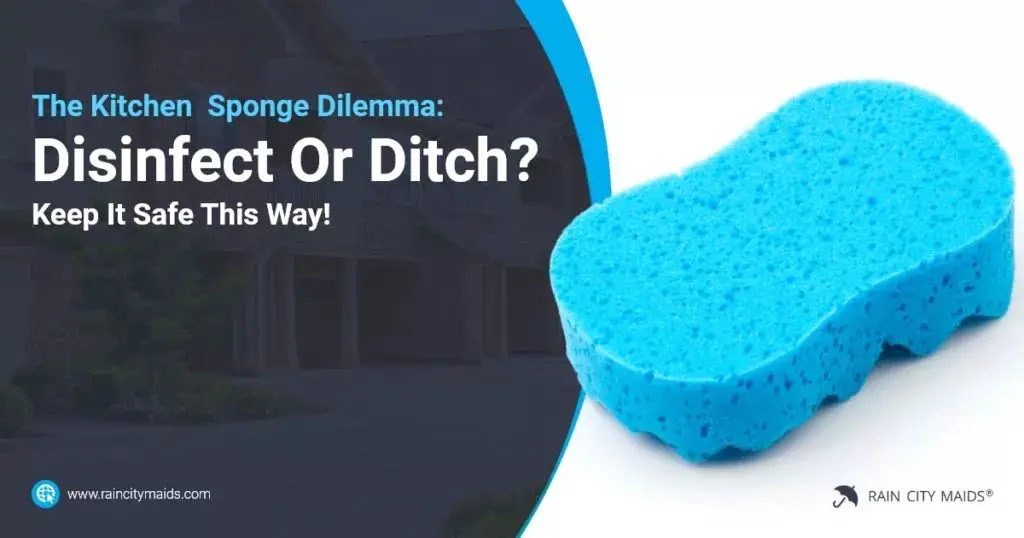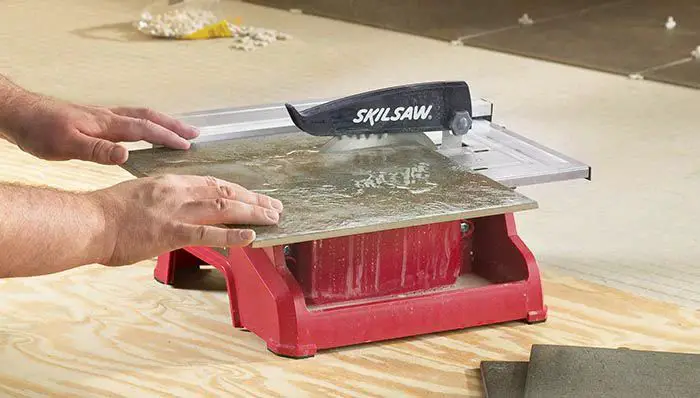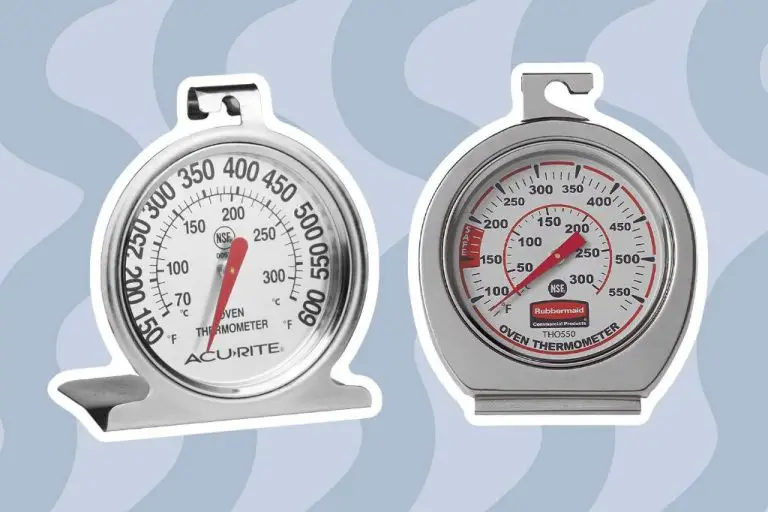Where Do You Keep A Dish Sponge?
Kitchen sponges are one of the most commonly used tools for washing dishes, countertops, and other surfaces. However, they can also be breeding grounds for bacteria if not properly stored. Maintaining a clean sponge is important for food safety and preventing the spread of illness.
According to research, the average kitchen sponge contains around 10 million bacteria per square inch. Since sponges are frequently wet and contain food particles, they allow bacteria to rapidly multiply. Proper storage and regular replacement is key to avoiding cross-contamination in the kitchen.
This article will cover tips and guidelines for keeping dish sponges sanitary. Proper sponge hygiene helps protect you and your family from dangerous bacteria that can lead to foodborne illnesses.
Kitchen Sink
The kitchen sink is a very common place that people store their dish sponge. Many people will leave the sponge sitting in the sink or on the edge of the sink for easy access while washing dishes. However, this can allow bacteria to easily multiply on the moist sponge.
According to a study by Blue Land, kitchen sponges hold more bacteria than any other surface in the home. Leaving a wet sponge sitting in the sink creates the perfect environment for bacteria like salmonella, listeria, and E. coli to thrive.
The kitchen sink itself also harbors a lot of germs from raw meats, vegetables, and other food particles that get transferred there. Allowing the sponge to touch and absorb those germs can quickly make it a bacteria breeding ground if left damp in the sink.
Dishwasher
Although many people place sponges in the dishwasher to clean them, research shows this can still harbor bacteria (“How to Sanitize a Kitchen Sponge,” Food Network, https://www.foodnetwork.com/how-to/packages/help-around-the-kitchen/how-to-sanitize-a-kitchen-sponge). The high temperatures in the dishwasher kill some bacteria, but do not fully sanitize the sponge. Over time, moisture and food debris trapped in the sponge allow bacteria to continue growing. The dishwasher method cleans the sponge to a degree, but it remains far from sterile.
According to food safety experts, the porous structure of sponges makes it difficult to fully eliminate all bacteria, even with thorough washing. Bacteria can easily survive and spread in the small crevices within a sponge (“Throw Out Your Kitchen Sponge ASAP—Yes, Really,” Food52, https://food52.com/blog/20221-you-won-t-believe-how-often-you-should-be-replacing-your-kitchen-sponge). While the dishwasher can reduce the bacterial load, it does not provide comprehensive disinfection.
For better results, experts recommend replacing kitchen sponges frequently, at least weekly. This prevents substantial bacterial growth over time. The dishwasher can be used to maintain cleanliness between replacements, but does not negate the need for regular sponge changes.
Microwave
Microwaving a dish sponge is a popular way to sanitize it and kill bacteria. Studies show that zapping a wet sponge in the microwave for 2 minutes can eliminate up to 99.99999% of bacteria, including Salmonella and E.Coli (source). The extreme heat generated by the microwave is effective at destroying mold, yeast, and other microorganisms that can accumulate on a sponge.
However, this high heat can damage the sponge itself. The intense radiation causes the sponge to harden and shrink over time, shortening its lifespan. Microwaving with scrub pads attached can also cause sparking. It’s best to remove any scrubbers first. While microwaving is an easy sanitizing method, replacing dish sponges frequently is a better option to keep them clean and usable.
Bleach Solution
Using bleach can help kill bacteria and disinfect your sponge (Source). Bleach solutions made with a small amount of bleach and water can sanitize your sponge and kill germs when soaked for 5-10 minutes. However, bleaching your sponge too frequently can start to break down the material and wear it out faster (Source). It’s best to limit bleaching your sponge to once a week or every couple of weeks.
Hydrogen Peroxide
Hydrogen peroxide is a natural antibacterial that can be used to disinfect your sponge and kill germs (Source). When soaked in hydrogen peroxide, the sponge will bubble up as the peroxide activates and releases oxygen. This oxygen releases free radicals that attack cell membranes and damage proteins, DNA, and other cell components, effectively killing microbes on the sponge (Source). However, hydrogen peroxide can also break down the cellulose fibers in the sponge over time, causing it to corrode and degrade faster. Moderation is key when using hydrogen peroxide to disinfect.
Replace Frequently
Kitchen sponges can harbor a significant amount of bacteria, even when properly cleaned and sanitized regularly. Over time, repeated use causes tiny tears and crevices in the sponge’s surface, allowing bacteria, mold, and yeast to accumulate.
New sponges start out relatively clean, with minimal bacteria present. However, research shows that after just two weeks of use, sponges can contain as much bacteria as you would find on a heavily contaminated surface (1).
To avoid the buildup of harmful microbes, it’s recommended to replace your kitchen sponge every 1-2 weeks. Many experts advise erring on the side of caution and replacing sponges weekly. More frequent replacement is suggested for households with a higher risk of illness (2).
Look for signs your sponge needs replacing, like a foul odor, slimy texture, visible mold, or breakdown of the sponge’s structural integrity. Don’t wait until your sponge starts falling apart – replace it regularly according to a schedule.
Sources:
(1) https://www.marthastewart.com/7781485/replace-kitchen-sponges
(2) https://www.epicurious.com/expert-advice/how-often-should-you-replace-your-sponge
Store Dry
Drying your kitchen sponge out between uses is an effective way to inhibit bacteria growth. According to a 2017 NPR article, research has shown that drying a sponge in a microwave or letting it air dry can significantly reduce bacteria levels. However, the remaining bacteria can still multiply quickly once the sponge is rewetted. The article recommends replacing sponges frequently, as “the bacteria on a 2-week-old sponge would return to the same level as on a brand new sponge within hours of rewetting.”

Additionally, a study cited in a Blue Land article found that air drying sponges for 24 hours reduced bacteria by 50-75%. So while drying alone won’t eliminate all bacteria, it can substantially reduce levels if done consistently between uses. Storing sponges dry when not in use deprives bacteria of the warm, moist environment they need to thrive.
Use Antibacterial Holder
Using a special antibacterial holder for your dish sponge allows it to dry properly between uses, which helps reduce bacteria growth. Standard sponge holders often trap moisture inside, creating an ideal environment for bacteria, mold, and mildew.
Sponge holders made from materials like copper or silicone have properties that inhibit bacterial growth. The small holes allow excess water to drain out from the sponge, keeping it dry. According to one source, copper releases ions that are toxic to bacteria (https://havensmetal.com/products/copper-sponge-caddy).
You can find antibacterial sponge holders in many styles at stores like Amazon, Walmart, and Bed Bath & Beyond. Prices range from $5-15 for basic models up to more high-end designer styles. Consider the size, drainage, material, and aesthetics to find one that fits your kitchen decor and storage needs.
Conclusion
In summary, there are a few key steps you can take to properly store your dish sponge and promote good hygiene. The most important recommendation is to allow your sponge to completely dry out between uses, either in a dish rack or an open-air basket. This prevents bacteria from multiplying rapidly in the damp environment. Regularly sanitizing your sponge with a diluted bleach solution, boiling water, or hydrogen peroxide can also kill pathogens. Replacing your sponge at least weekly ensures you’re not just transferring dirt and germs back to clean dishes. Storing the sponge in a ventilated container or using an antibacterial sponge holder limits contact with contaminants. Following these simple guidelines will keep your sponge fresher for longer and reduce the spread of illness-causing germs in the kitchen.





